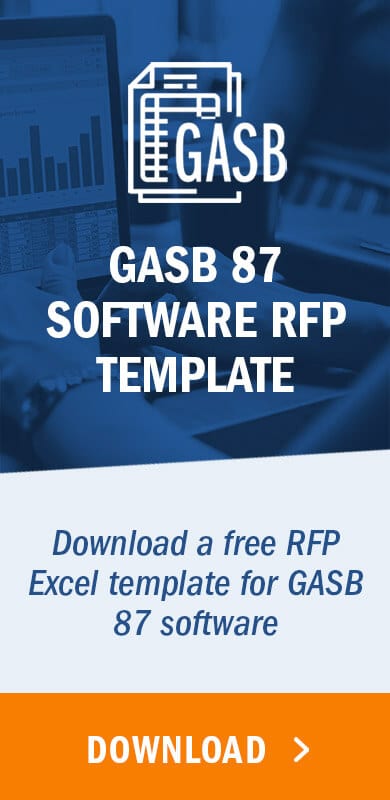According to the Governmental Accounting Standards Board (GASB), the following is the purpose of the new lease accounting standard:
“The objective of this Statement is to better meet the information needs of financial statement users by improving accounting and financial reporting for leases by governments. This Statement increases the usefulness of governments’ financial statements by requiring recognition of certain lease assets and liabilities for leases that previously were classified as operating leases and recognized as inflows of resources or outflows of resources based on the payment provisions of the contract. It establishes a single model for lease accounting based on the foundational principle that leases are financings of the right to use an underlying asset. Under this Statement, a lessee is required to recognize a lease liability and an intangible right-to-use lease asset, and a lessor is required to recognize a lease receivable and a deferred inflow of resources, thereby enhancing the relevance and consistency of information about governments’ leasing activities.”
GASB 87 was released in June of 2017 and specifically addresses leases. Similarly to ASC 842 and IFRS 16, GASB 87 will require governmental entities that are lessees to recognize a right-of-use asset and corresponding liability for all leases on its balance sheet. Additionally and like the IASB lease standards, GASB guidance has one lease classification: finance leases. For lessors, the standard is significantly different from the ASC 842 and IFRS 16, with the GASB lessor accounting mirroring lessee accounting.
Given some of these differences, government agencies have waited on the finalized Implementation Guide so that they could begin transitioning to the new standard.
What to do now
Time is of the essence. Government agencies are expected to comply with the new lease standard for all reporting periods beginning after December 15, 2019.
As you begin to account for leases under the new rules, refer to our GASB 87 lease example. In addition to step-by-step guidance on how to account for a lease under GASB 87, we provide links to helpful resources to enable a smooth transition and ongoing compliance.





